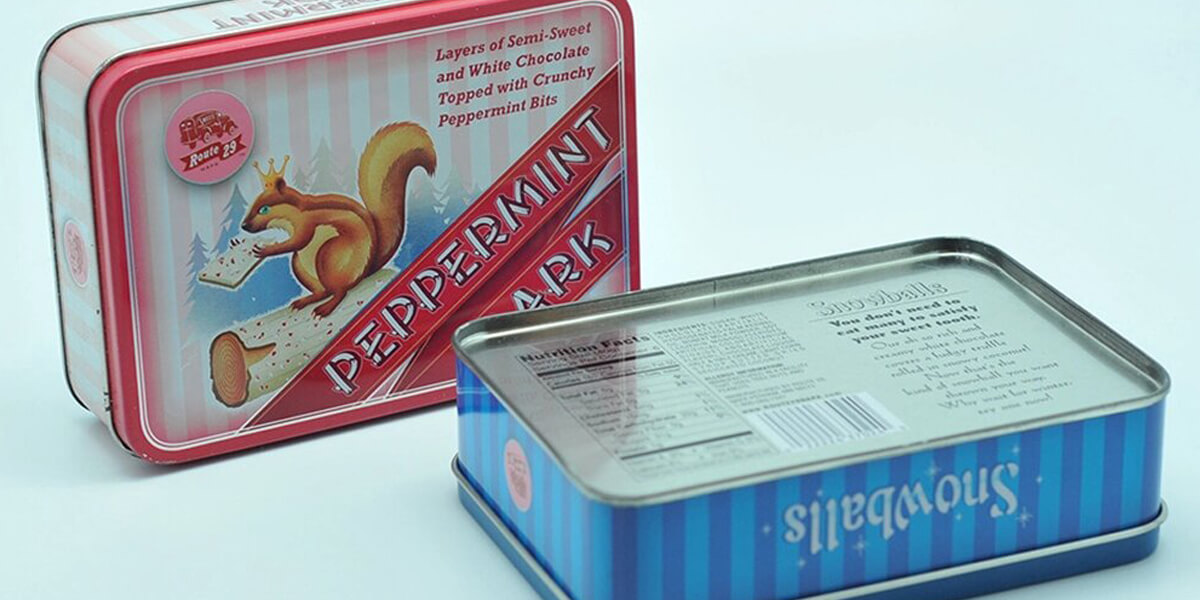Процес виготовлення консервної банки
Олово є загальним компонентом. Щось, для чого олово використовується якомога частіше, - це підставки для їжі. Він глибоко непроникний для споживання і може охоплювати різні метали з міркувань безпеки. Один вид олова використовується для запобігання гниття зубів. Цей вид олова називається фтористим оловом. Фторид олова додають до зубної пасти як фіксатор. Олово також можна поєднувати з різними предметами. Щось, до чого олово регулярно зв’язується, це мідь - олово та мідь утворюють зв’язок, що називається бронзою.
Олово має багато різних застосувань і довгу історію. Кажуть, що виробництво олова становить 3500 р. До н. Хр. Відбувся передчасно. Місце, де в кінцевому підсумку виготовили основну коробку, - Туреччина.
The manufacture of tin involves the extraction of tin from its metal, which is cassiterite. Several different materials are used during the manufacturing process, such as limestone, silica, and salt. The cassiterite metal is rinsed first to drive off the substance and physical devaluations. In this process, the metal is passed through a vibration chamber to evacuate physical and substance evaluation. After that, the mineral becomes increasingly focused through the expansion of some synthetic compounds. As the mineral becomes increasingly concentrated, it is transported to the top of the chamber from where it is collected.
Cassiterite is mined to make tin. This material is combined with various materials, such as carbon, silica, limestone, salt, and heating oil or coal. When tin is mined, tin is refined and processed. There is a method that is followed to make and process tin. The process relies on the source of the mined mineral.

Process
The initial phase of the tin manufacturing process is called mining. This is the place where tin can manufacturers find the stone and apply it using a floating excavation. Tin can manufacturers guide the stone through many screens that rotate and tables that tremble. This process is used to drive the tin out of the rock.
The subsequent progress is called the concentration of the mineral. The tin can manufacturers pass the metal through a few screens that dispose of some of the different materials. At this point, it is washed in a tank. Then they put the metal in a buoyancy tank and also contain some different particles so that the tin rises. At this point, they dry the metal and go through it again to evacuate more molecules.
After completing this process, the tin can manufacturers go through the can in a process called melting. You throw the can in a heater. There is either oil or coal in the heater. The can is heated until it turns into slag. At this point, the slag is placed in a subsequent heater. There is additional heating to expel contaminants from the connection.
There is then a final heating meeting to regain the can connected to iron. From this point on, the can is obtained through a series of heaters, where it is heated, steamed, and finally refined and bubbled.
Tin production and tin products
Tin production plants have become an important part of our way of life. We drink cold drinks, brew, and many different things that are bundled in tin cans. Tin cans have completely replaced glass bottles, and the tin business is making acceptable benefits. Global interest in tin cans is growing exponentially. In organizations, sports buildings, and discotheques, glass bottles are currently extremely unusual. Tin cans are light, versatile, and look a la fashion for individuals. Tin cans that are not similar to glass bottles do not break effectively and there is generally exceptional safety against injury.
The tin manufacturing process involves extracting tin from its combinations and refining it so that it tends to be used by the general population. The tin making process has no antagonistic natural reactions and produces the least waste. The best part of the process is that it doesn't produce any ecological poison. Tin production is likely to become increasingly well known, given the ongoing research to replace unsafe components such as lead and mercury in batteries, electronic devices, and other such items.
Виробнича вартість олов'яного тримача низька порівняно з різними матеріалами, що робить його основним для багатьох компаній. Навіть у великих масштабах промислові власники олова використовують їх для транспортування товарів та рідин на великі відстані. Не реагує на їжу або рідини, не виділяє шкідливих речовин і майже не чутливий до води та тепла, саме це робить загальний вибір промисловців та кінцевих споживачів. Найчастіше в олов’яних виробах використовуються ланч-бокси , пачки холодних напоїв, пенали та величезні тримачі для прицілів для гвинтівок.
Безпека
У цей момент банку піддається процесу, який називається плавленням. У цьому процесі виплавки концентрований олово змішують з вуглецем і нагрівають у нагрівачі приблизно до 1400 градусів Цельсія. Під час цього процесу загоєння до суміші олова та вуглецю додають вапняк та діоксид кремнію. Це робиться для витіснення подальшого бруду, що присутній у балончику.
В кінці процесу плавлення олово, що набувається, є грубим оловом. Потім цю нерафіновану банку розчиняють парою, і за допомогою цього процесу девальвація збирається і може бути фізично вигнана. Олово, придбане в даний час, є чистим до 99,8%.
Due to the manufacturing process, there are no valuable side effects. Wasteful items contain sand, stone, and earth that are disposed of during the mining and smelting process. The slag released during the smelting and refining process contains arsenic, lead, and various toxic substances that are harmful to the earth. In any case, tin is not unsafe even for the earth.
Використання олова в комерційних цілях збільшується і буде зростати і надалі. Оскільки такі матеріали, як кадмій та свинець, шкідливі та шкідливі, робляться спроби замінити ці матеріали оловом. В якості штукатурки для кріплення використовували свинець і олово. В даний час робляться спроби замінити цю суміш оловом і сріблом як зв’язок. У дробових картриджах свинцеві постріли поступово замінюються пострілами з листового металу. В результаті олово поступово замінює шкідливі матеріали, такі як свинець та графіт, завдяки позитивним природним ефектам
Поява олова стає вдосконаленим елементом контролю за всіма екологічними забрудненнями і, зрештою, робить землю вищим середовищем існування.

